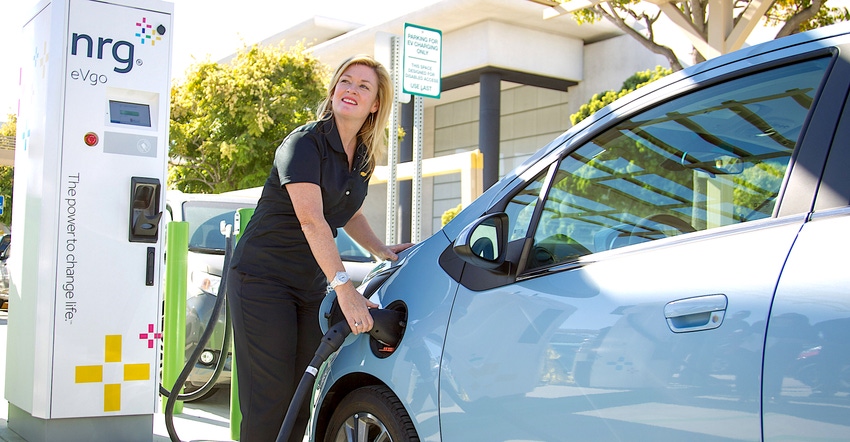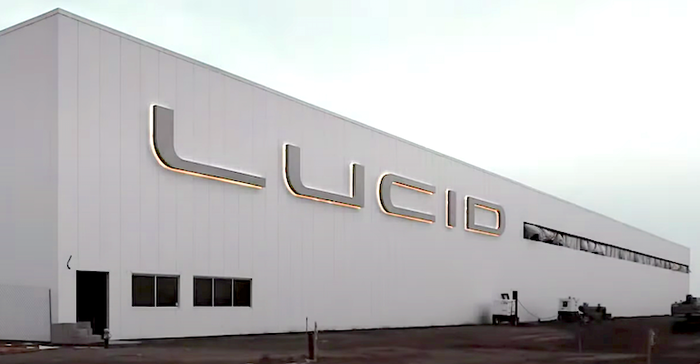The U.S. EPA has released proposed new car emissions rules that would push carmakers to build even more EVs than called for in their current ambitious plans.

The U.S. Environmental Protection Agency (EPA) issued new proposed emissions rules for cars that will have the effect of mandating a swift shift to battery electric vehicles.
The proposed rules do not mandate any specific number of EVs, but they do stipulate 13 percent annual reductions in greenhouse gas emissions from carmakers’ fleets and a 56 percent reduction from the current standard for 2026. The proposal would take effect starting in 2027 and continue through 2032. The agency is also proposing reductions for medium-duty and heavy-duty commercial trucks.
Achieving these numbers would require nearly two-thirds of cars to be EVs. The projected benefit would a cumulative elimination of nine billion tons of CO2 through 2055. That equals about double the annual U.S. CO2 emission total. The standards notably do not require any specific number of EVs from manufacturers and do not propose to prohibit sales of combustion vehicles.
In the proposal, the EPA notes that carmakers’ own forecasts show that they currently plan for 48.6 percent of their new cars to be EVs by 2030.
Unsurprisingly, EV startups Rivian and Lucid Motors voiced support for the EPA proposal. “The vehicle emissions standards proposed today are a critical addition to the Administration’s climate portfolio, and we applaud the realistic goals set forward in the headline targets. Chris Nevers Rivian Sr. Director of Public Policy This rulemaking will guide the industry’s technological trajectory for decades to come. We look forward to providing a detailed review of the proposal and will continue to make the case for the strongest possible standards through our products and our advocacy.”

Lucid posted this response on the company’s Twitter account: “We look forward to working with government to support ambitious regulations that not only move the country toward using more EVs but more efficient EVs with U.S.-developed high-tech that enhance the benefits of this transition.”
Can We Build It?
The question is how much ability the industry has to accelerate its EV shift considering the cost and supply constraints it currently faces.
“The mandates are for 2027-2032. That is fast,” noted Cox Automotive executive analyst Michelle Krebs. “Many challenges need to be handled to achieve the goal. Can auto companies actually make enough to fill that goal? Manufacturing operations and supply chains have to be completely reinvented.”
The answers to these questions are important because if the supply of EVs remains tight, prices will remain high. “In our surveys, the number one obstacle to EV adoption is the cost of EVs,” she said. “The average cost of an EV is $58,000 (down from $66,000 last year) versus $48,000 for a gas engine car.”
Krebs notes that the EPA predicts buyers will save $9,000 in fuel, maintenance, and repair costs over eight years of EV ownership compared to a gas vehicle. “But EVs will cost the manufacturer an extra $1,200 per vehicle,” she pointed out. “Automakers can’t afford to absorb that cost when they aren’t making money on EVs. There’s a tricky balance between making EVs affordable and keeping manufacturers profitable.
The EPA’s hoped-for two-thirds of new vehicle sales is a higher percentage than the latest forecasts at Guidehouse Insights, according to senior research analyst Mike Austin. “It’s more in line with where California and the other ZEV (Zero Emission Vehicle) states will need to be to hit their goals. So in a way, the new proposal is pushing the rest of the country closer towards that target,” he said.
Yes We Can!
These rules don’t take effect in today’s market, with its constrained supplies of batteries and components, but in 2027, when it is reasonable to expect these constraints to be somewhat relieved. “The rules take effect for the 2027 model year, which should be right around when we see all the new manufacturing and battery plants spurred on by the IRA (Inflation Reduction Act) coming online, so it’s definitely possible that we’ll have the capacity for that much demand. Also, bear in mind this is a proposed ruling, so there’s a good chance some parts will be relaxed before the final ruling a year from now.”

Electrify America
There is also the question of the maturation of the public charging network, which is crucial both for long-distance EV practicality and for the utility of EVs for the large portion of the population for whom access to a home charging station isn’t possible. A report by Bain & Co. forecasts that the EV charging network will grow twenty-fold by 2030, compared to a baseline of 2021.
An expanded network would also boost the viability of EVs with smaller, less resource-intensive batteries, Austin noted. “Longer term, when the charging infrastructure is more mature and there’s increase pressure from the regulations, automakers might try to build compact vehicles with, say, 150 miles of range from smaller battery packs as a more affordable option.”
The conversion of the nation’s fleet is sometimes likened to other large national projects, like the Apollo moon program. But the key difference is that such government projects are paid for from tax money that consumers never see in their bank accounts, Krebs pointed out. “This is like the moonshot of the 1960s, but that didn’t involve everyday consumers digging into their bank accounts to buy their second-most expensive item,” she observed.
About the Author(s)
You May Also Like





